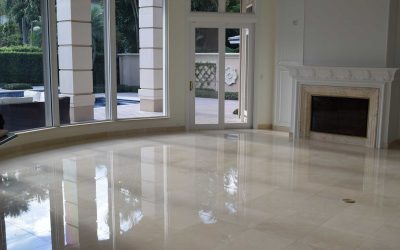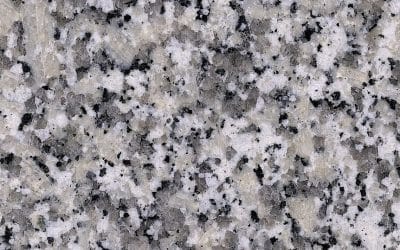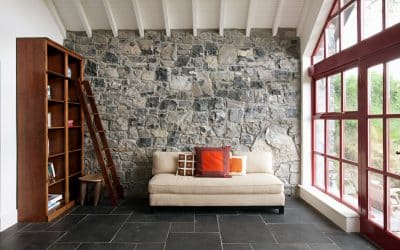Marble surfaces exude elegance and timeless beauty. Yet, maintaining their luster can be a challenge.
Many homeowners seek natural solutions for cleaning and polishing marble. Baking soda emerges as a popular choice.
But can you polish marble with baking soda effectively? This question intrigues many DIY enthusiasts.
Baking soda, a common household item, offers a gentle cleaning approach. It’s known for its mild abrasive properties.
This article explores how to polish marble with baking soda. We’ll guide you through the process step-by-step.
Understanding the benefits and risks is crucial. Baking soda can enhance marble’s shine but requires careful handling.
We’ll also discuss special considerations for using baking soda on marble floors. Maintaining marble’s beauty demands attention.
Join us as we delve into the world of marble care. Discover how baking soda can be your ally.
Understanding Marble: Beauty and Vulnerability
Marble is renowned for its exquisite appearance. It graces many homes with elegance. Yet, it demands mindful maintenance.
This natural stone is inherently porous. It can easily absorb stains and liquid spills. Understanding its vulnerabilities is crucial.
Marble requires gentle care. Harsh cleaners or abrasive tools can damage its surface. Avoiding such products is essential to preserving its beauty.
Here’s what makes marble special and delicate:
- Porosity: Prone to absorbing liquids
- Sensitivity: Easily scratched or etched
- Variety: Comes in many patterns and colors
Taking the time to learn about marble can prevent mishaps. You’ll appreciate both its allure and its fragility.
With careful handling, marble can retain its stunning look. The right cleaning techniques help maintain its grace and charm.
By safeguarding against damage, marble can remain a majestic centerpiece in any home.
Can You Polish Marble with Baking Soda?
Absolutely, baking soda can polish marble. It’s a mild abrasive that gently cleans surfaces, making it a suitable choice.
Baking soda’s properties make it ideal for marble. It cleans without harsh chemicals. It’s a natural, safe option for homeowners.
There are advantages to using baking soda on marble:
- Mild Abrasive: Effectively cleans without scratching
- Non-Toxic: Safe for homes with children or pets
- Eco-Friendly: A greener alternative to chemical cleaners
While baking soda is helpful, caution is needed. Prolonged exposure can dull the surface. It is vital to use it wisely.
Testing in an inconspicuous area ensures marble compatibility. Proper usage enhances marble’s natural shine, keeping its beauty intact. This method is highly valued by many DIY enthusiasts for its effectiveness.
Benefits and Risks of Using Baking Soda on Marble
Polishing marble with baking soda has its perks. This household staple offers several benefits for marble surfaces.
Baking soda is gentle yet effective. It removes stains without damaging the stone. Its eco-friendly nature is a bonus.
Here are some benefits of using baking soda:
- Restores Shine: Helps return marble’s natural luster
- Cost-Effective: A budget-friendly alternative to store-bought cleaners
- Versatile: Suitable for many marble types
However, there are risks to consider. Baking soda can dull the marble if misused.
Extended application times should be avoided. Always test on a small area before full application. This helps prevent potential mishaps.
Proper application ensures the balance between benefits and risks. Used correctly, baking soda can be a valuable tool.
How to Polish Marble with Baking Soda: Step-by-Step Guide
Polishing marble with baking soda is straightforward. This approach is simple, requiring minimal supplies and effort.
Follow these steps to achieve a gleaming marble finish.
Step 1: Gather Your Materials
Having the right tools is essential. Gather everything before starting.
Here’s what you’ll need:
- Baking soda
- Water
- Soft cloths
- Mixing bowl
- Measuring spoons
Ensure all items are within reach to streamline the process.
Step 2: Prepare the Marble Surface
Prepare your marble by cleaning it thoroughly. Remove any dust or debris.
Ensure the surface is completely dry before proceeding. Drying prevents streaking.
Step 3: Mix and Apply the Baking Soda Paste
Create the paste using baking soda and water. A balanced blend works best.
Combine them in a bowl:
- 3 parts baking soda
- 1 part water
Stir until smooth, then apply gently.
Step 4: Buff and Rinse for a Polished Finish
Allow the paste to sit for five minutes. Gently buff with a soft cloth.
Rinse thoroughly with clean water to remove residue. Dry with a fresh cloth for a dazzling polish.
Baking Soda on Marble Floor: Special Considerations
Using baking soda on marble floors requires some additional care. Floors experience more wear and tear.
Consider these guidelines for the best results.
Avoid using too much water. Excess water can seep into marble, causing damage.
Use a damp cloth to apply the baking soda paste sparingly.
When cleaning large surfaces, work in small sections. This prevents the paste from drying out.
Here’s a quick reminder:
- Work in small areas
- Use minimal water
- Buff gently
Once you finish polishing, rinse thoroughly. Ensure no residue is left on the surface.
Dry the floor completely to prevent water spots. A microfiber mop works well for this.
Consider sealing your marble floor after cleaning to protect it. This helps maintain its shine and durability over time.
Tips for Maintaining Marble’s Shine and Longevity
To keep your marble surfaces looking pristine, regular maintenance is key. This ensures their lasting beauty.
Dust marble surfaces frequently using a soft cloth. This prevents dirt from scratching the marble.
For routine cleaning, use pH-neutral cleaners. They offer a gentle cleanse.
Avoid acidic or harsh chemicals. These can etch the marble surface, leading to dullness.
Here’s how you can maintain your marble:
- Dust regularly
- Use pH-neutral cleaners
- Seal the marble surfaces
- Wipe up spills promptly
Sealing your marble adds a protective layer. It guards against stains and scratches.
Act quickly with spills, especially with oil or wine. Immediate action prevents lasting stains.
By embracing a simple routine, you can keep your marble looking as beautiful as the day it was installed.
Common Mistakes to Avoid When Using Baking Soda on Marble
When using baking soda on marble, some common missteps can lead to damage. Being aware of these ensures better care.
Never apply baking soda in concentrated amounts. It’s abrasive nature requires dilution with water.
Avoid leaving the baking soda paste on the marble surface for too long. It can dull the shine.
Here are key mistakes to avoid:
- Using undiluted baking soda
- Leaving paste on too long
- Using abrasive pads
Lastly, don’t use harsh brushes or metal scrubbers. They can scratch and harm the delicate surface of marble.
When to Call a Professional: Pacific Marble Restoration’s Expertise
While DIY methods are useful, some marble tasks require professional attention. Certain stains or damages need expert treatment for proper restoration.
Pacific Marble Restoration has extensive experience in bringing marble back to life. Their skilled team uses specialized tools that deliver refined results.
Consider calling them if you face these challenges:
- Deep-set stains or etching
- Extensive surface damage
- Large-scale maintenance needs
Choosing professionals ensures that your marble surfaces remain pristine and enduring. Their expertise guarantees results that DIY methods cannot achieve.
Frequently Asked Questions about Baking Soda on Marble
Is baking soda safe for all types of marble?
Baking soda is generally safe but varies by marble type. Always test in a small area first.
Can baking soda remove all stains from marble?
It works on most stains, but stubborn ones might need professional cleaning services.
Conclusion: Achieving Lasting Beauty with the Right Care
Marble, with its timeless elegance, deserves your attention and care. When polished properly, it illuminates any space. Using baking soda offers a simple, eco-friendly way to maintain this precious stone’s luster.
Remember, gentle treatment is essential. Regular cleaning and polishing prevent dullness and damage. With careful attention, your marble surfaces can maintain their stunning appearance for years.
When in doubt or faced with extensive restoration needs, consider professional help. Expertise can transform your marble, restoring its original magnificence. Embrace these practices for enduring marble beauty.










0 Comments